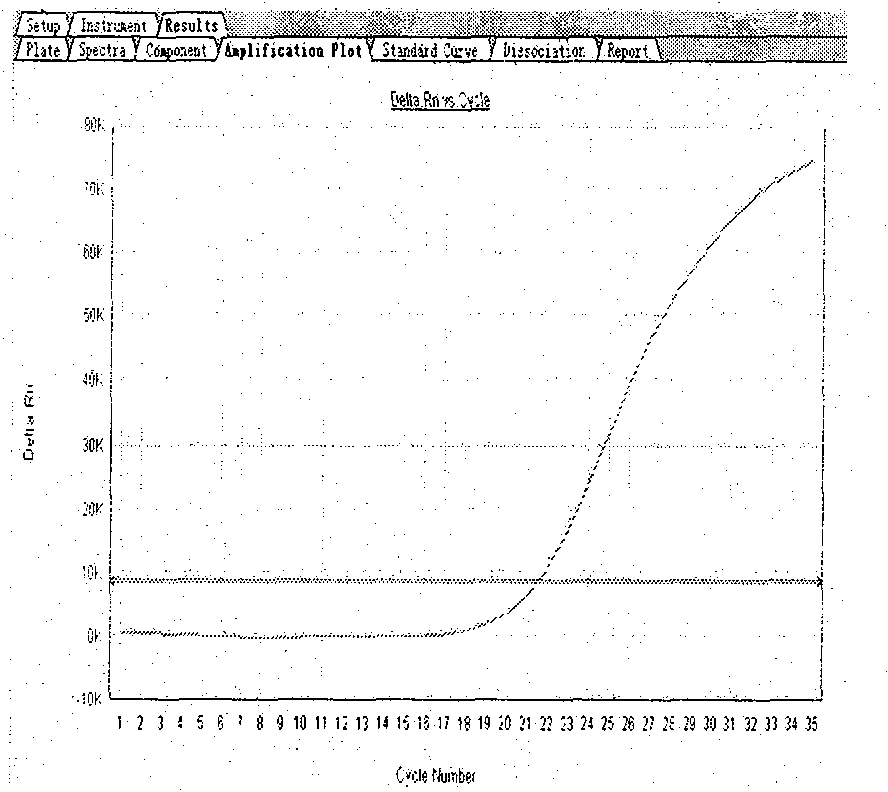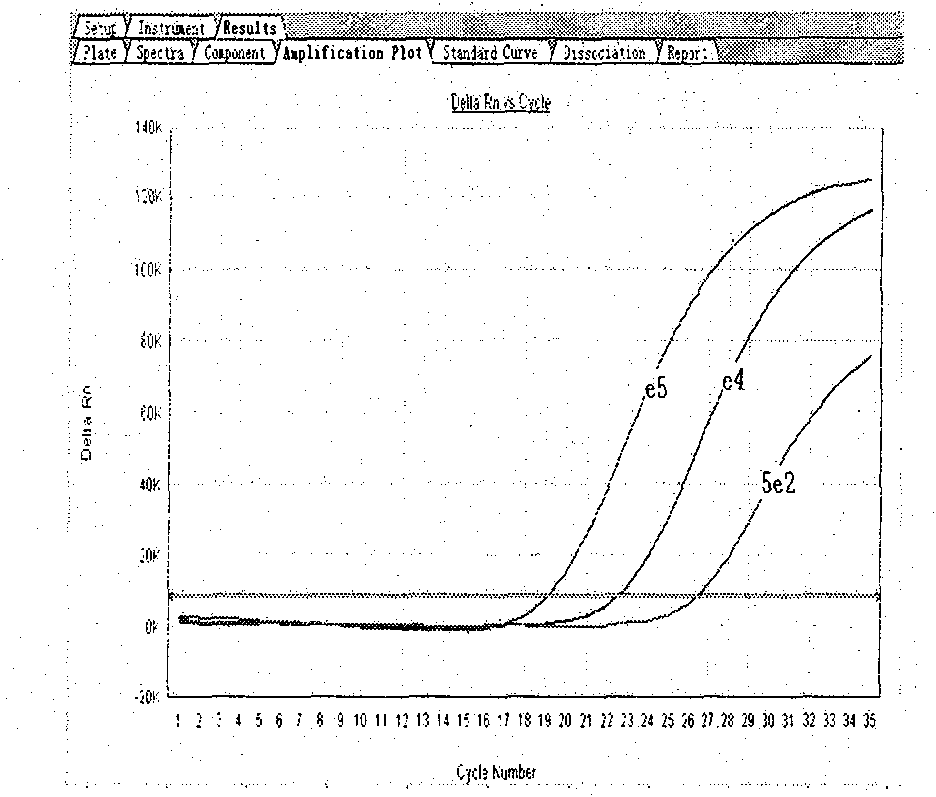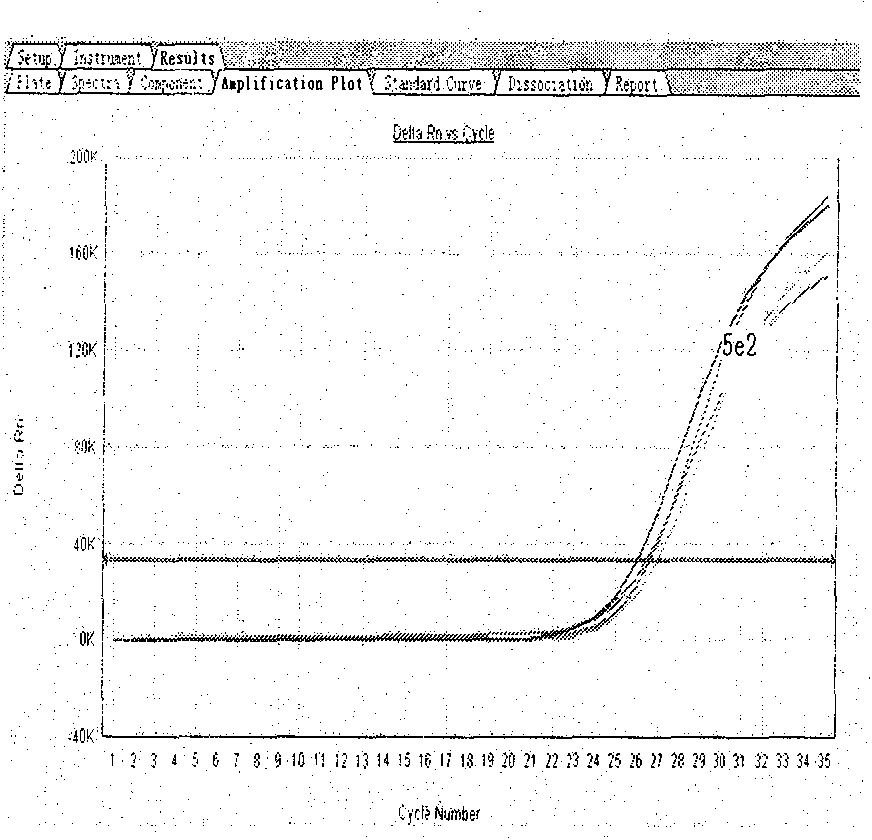6,11 type human papillomavirus fluorescence quantitative PCR detection method and kit thereof
A technology for human papillomavirus and detection methods, which is applied in the determination/inspection of microorganisms, biochemical equipment and methods, DNA/RNA fragments, etc., can solve the problems of reducing the hybridization rate, affecting the detection rate of HPV2 DNA, and saving manpower The effect of material resources, avoiding false negative results, and saving monitoring time
- Summary
- Abstract
- Description
- Claims
- Application Information
AI Technical Summary
Problems solved by technology
Method used
Image
Examples
Embodiment 2
[0055] Embodiment 2---clinical testing
[0056] Using the above method to detect 115 clinical samples, including 42 patients with human papillomavirus 6 and 11, the positive rate of detection is 99%, the accuracy rate is 98.6%, and it can accurately quantify human papillomavirus 6 and 11 analysis, far superior to the enzyme-linked immunosorbent assay (ELISA) method. The invention has the advantages of good specificity, high sensitivity, accurate quantification, rapidity, convenience and high repeatability, and can quickly and quantitatively detect types 6 and 11 human papillomaviruses. In addition, the fluorescent quantitative PCR detection method of human papillomavirus types 6 and 11 reduces the workload and cost of PCR diagnosis of clinical samples, and has potential application value.
PUM
 Login to View More
Login to View More Abstract
Description
Claims
Application Information
 Login to View More
Login to View More - R&D
- Intellectual Property
- Life Sciences
- Materials
- Tech Scout
- Unparalleled Data Quality
- Higher Quality Content
- 60% Fewer Hallucinations
Browse by: Latest US Patents, China's latest patents, Technical Efficacy Thesaurus, Application Domain, Technology Topic, Popular Technical Reports.
© 2025 PatSnap. All rights reserved.Legal|Privacy policy|Modern Slavery Act Transparency Statement|Sitemap|About US| Contact US: help@patsnap.com



